Middlesbrough FC
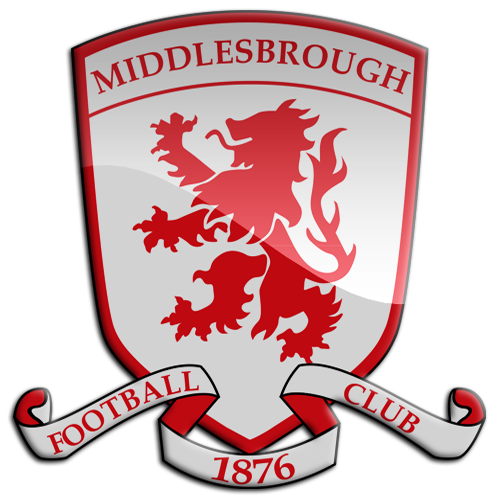
Details
- Name: Middlesbrough Football Club
- Nickname: The Boro / Smoggies
- Founded: 1876
- Ground: Riverside Stadium
- Ground capacity: 34,742
The Riverside Stadium
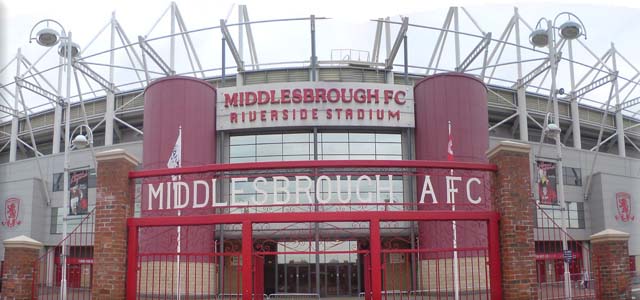
The stadium was built to replace Ayresome Park after the Taylor Report, which required all top division football stadia to be all-seater. After the report was delivered in January 1990, Middlesbrough needed an all-seater stadium by August 1994, and were unable to expand Ayresome Park outwards owing to its location in a residential area, and expanding the stadium upwards would have limited the club to a capacity of around 20,000 seats – the club wanted a considerably larger capacity. The decision was taken by club officials to build a new stadium; Teesside Development Corporation offered them the Middlehaven site by the River Tees for development.
The new 30,000 seater stadium was constructed by Taylor Woodrow Construction for £16 million, taking approximately nine months to complete after work began in the autumn of 1994. The name of the stadium was chosen by the club's fans, following a vote during the final game at Ayresome Park. The other choices available were Middlehaven Stadium, Erimus Stadium and Teesside Stadium. When first opened, the name was amended to Cellnet Riverside Stadium (and then BT Cellnet Riverside Stadium) as part of a £3 million sponsorship deal with Cellnet, but this deal ended after the 2001–02 season.
The first game was played against Chelsea in front of a 28,286 crowd (the highest home attendance in 14 years) on 26 August 1995. Middlesbrough won the game 2–0, with Craig Hignett taking the honour of scoring the first ever goal at the stadium, Jan Åge Fjørtoft scoring the second. Their first season at their new stadium was also their first back in the FA Premier League following promotion after two seasons away.
In their second season at the Riverside Stadium, Middlesbrough were runners-up in both of the domestic cups but a points deduction in the league meant that they were relegated from the Premier League.
In 1998 – when Middlesbrough were promoted back to the Premier League at the first attempt – the capacity was increased by 5,000 by filling in the north and south-west corners at a cost of £5 million. This expansion gave the stadium a 35,100 capacity. Reorganisation of the stadium has resulted in the capacity being reduced slightly to 34,988 in June 2008 and then to 34,742 for the start of the 2013–14 season. The club have the Council's permission to extend the stadium by another 7,000 if demand made it necessary, which would bring its capacity up to approximately 42,000.
In 2005 the club resurrected the old Ayresome Park gates which had been famously locked when the club went into liquidation. They were erected outside the Riverside Stadium as a reminder of the past. Another addition has been statues of former players, George Hardwick and Wilf Mannion. In front of the old Ayresome park gates is the location for the "Borobrick Road", where fans can pay to have a message inscribed on a brick (often in memory of a deceased family member) to be added to the road. For Armistice Day 2008, a set of bricks commemorating 8 players who died in the World Wars was unveiled.
In July 2008, planning permission was granted by Middlesbrough Council to construct a wind turbine at the site of the stadium, standing 125 metres high and capable of generating 3 Megawatts of electricity. The turbine will be used to power the stadium, with the excess being sold to the National Grid.
On 15 March 2013, it was announced that Conference National side Gateshead would stage a "home" game at the Riverside Stadium, after continual drainage problems at Gateshead International Stadium caused them to play their last 12 league games of the season at five different venues.
The stadium is fully enclosed with every seat offering an uninterrupted view of the pitch. The four main stands are commonly known as the North, East, West and South stands. The corners are referred to as the North-East, North-West, South-East and South-West corners. Concourses run around the entirety of the ground with kiosks serving food and drink.
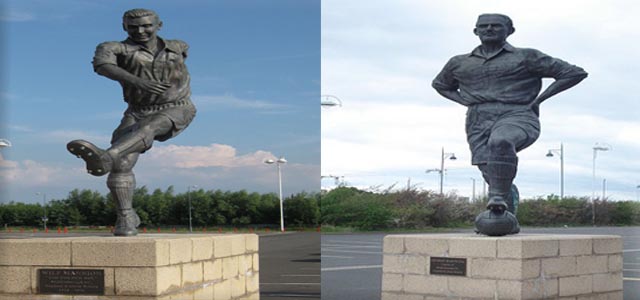 Statues of Wilf Manion 1936 - 1954 (left) & George Hardwick 1937 - 1950
Statues of Wilf Manion 1936 - 1954 (left) & George Hardwick 1937 - 1950
The North stand backs on to the River Tees and is where the majority of the more vocal home support congregates, and thus is also known as the New Holgate End in reference the Holgate End at Ayresome Park, where the similar vocal supporters were located.
The West stand runs along the length of the pitch and is the stadium's largest stand. The stand contains a number of executive boxes along its length as well as restaurants etc. The stand houses the changing rooms, and the players tunnel emerges from the middle of the stand. The main television gantry and commentators / press box is located at the back of the stand. White seating in the top tier spells out the club's nickname "BORO".
The East stand greets the players as they walk out the tunnel. White seating in the top tier of the stand spells out "MFC". The roof houses five flagpoles with various flags flying, usually representing the league and cup competitions the club are participating in, as well as a flag of the team crest. The East stand houses a Family Zone (North east end) and also visiting supporters (South east end). A giant TV screen is located at the back of the South east corner.
The South stand has previously housed visiting supporters (now relocated to the East stand) but is currently (2013/14 season) occupied by home supporters including the vocal Red Faction.
Records
Record Attendance (All teams): 35,000 England v Slovakia, 11 June 2003, (Euro 2004 qualifier)
Record Attendance (Middlesbrough): 34,836 v Norwich City, 28 December 2004 (FA Premier League)
Michael Carrick

The Facts
Middlesbrough Football Club is a professional association football club based in Middlesbrough, North Yorkshire, England.
Formed in 1876, they have played at the Riverside Stadium since 1995, their third ground since turning professional in 1889. They played at Ayresome Park for ninety-two years, from 1903 to 1995.
They were one of the founding members of the Premier League in 1992.
The club's main rivals are Sunderland and Newcastle United although there is also a rivalry with Yorkshire club Leeds United.
The club's highest league finish to date was third in the 1913–14 season and they have only spent two seasons outside of the Football League's top two divisions.
The club came close to folding in 1986 after experiencing severe financial difficulties before it was saved by a consortium led by then board member and later chairman Steve Gibson.
Middlesbrough were deducted three points for failing to fulfil a fixture against Blackburn Rovers in the 1996–97 Premier League season and subsequently relegated.
They were promoted the following season and spent eleven seasons in the top division before being relegated again in 2009.
Middlesbrough won the League Cup in 2004, the club's first and only major trophy.
They reached the 2006 UEFA Cup Final, but were beaten by Spanish side Sevilla.
After seven years in the Championship, Middlesbrough secured promotion to the Premier League in 2016 after finishing in second place.
The club's traditional kit is red with white detailing. The various crests throughout the club's history, the most recent of which was adopted in 2007, incorporate a lion rampant.
For further information check out their Official website
Notable Players
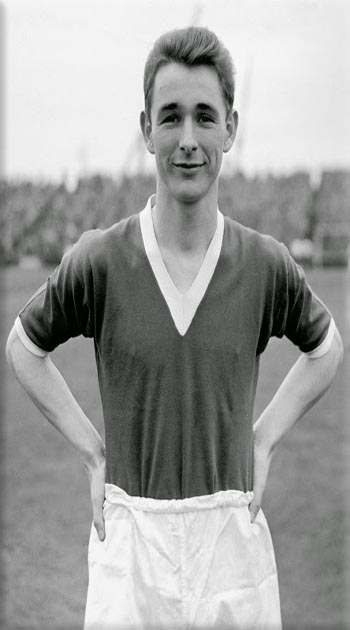
Brian Clough 1955-1961
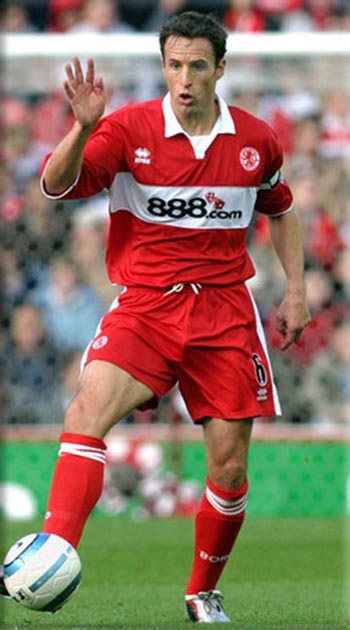
Gareth Southgate 2001 - 2006
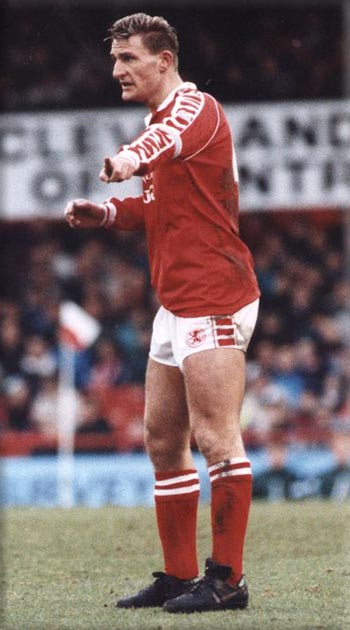
Tony Mowbray - 1982–1991
The History
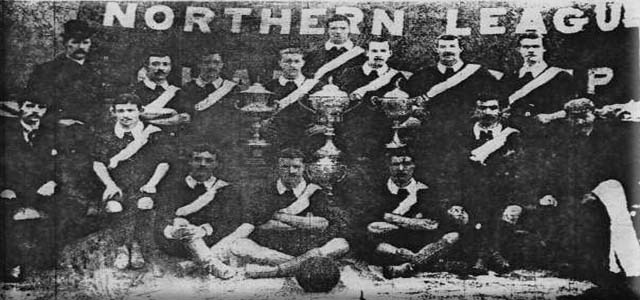
They won the FA Amateur Cup in 1895 and again in 1898. The club turned professional in 1889, but reverted to amateur status in 1892. They turned professional permanently in 1899. After three seasons, they won promotion to the First Division, where they would remain for the next 22 years.
In 1903, the club moved to Ayresome Park, their home for the next 92 years. In 1905, the club sanctioned the transfer of Alf Common for £1,000, a record fee. Over the next few years, their form fluctuated greatly, rising to sixth in 1907–08 before dropping to 17th two seasons later. The club rose to their highest league finish to date, third, in 1913–14. The First World War soon intervened and football was suspended. Before league football resumed, Middlesbrough won the Northern Victory League, but the team were unable to maintain their previous form and finished the 1919–20 season in mid-table. They remained in the First Division for the next few seasons, but were relegated in 1923–24 after finishing bottom, 10 points adrift of their nearest rivals.
Three seasons later, they won the Division Two title. During that season, debutant George Camsell, who had signed from Third Division North side Durham City the previous season, finished with a record 59 league goals, which included nine hat tricks. He would continue as top scorer for each of the next ten seasons. Their tenure back in the top flight lasted only one season, and the club were relegated. They were promoted at the first attempt in 1928–29, winning another Second Division title. The club remained in the First Division until 1954.
The decade before the war saw the emergence of Wilf Mannion and George Hardwick, both of whom would go on to become England internationals in the years ahead. Middlesbrough climbed to fourth in the last full season before the Second World War and were expected to challenge for the title next season, but the war intervened. After the war, the club was unable to recover the form of the previous seasons and hovered around mid-table and exited in the early rounds of the FA Cup.
Soon afterwards the team began to falter, eventually suffering relegation in 1953–54. This was the start of a 20-year spell outside the top division, but saw the emergence of one of the club's top goalscorers, Brian Clough, who scored 204 goals in 222 games, before he left for Sunderland. Over that period, Middlesbrough maintained reasonable progress in the Second Division but were never serious contenders for promotion. After a fourth-place finish in 1962–63, the club endured a steady decline and were relegated to the Third Division for the first time in their history in 1966.
New manager Stan Anderson returned the club to the second flight at the first attempt. Middlesbrough would not finish below ninth during the next eight seasons. By 1974, Jack Charlton had taken over as manager and guided the team back to the top flight. They ensured promotion as early as 23 March, and with eight games of the season left, they became runaway champions, finishing with a record 65 points. Middlesbrough won their first silverware as a professional side in the 1975–76 season, lifting the Anglo-Scottish Cup in its inaugural season after a two-legged final win over Fulham.
The club experienced severe financial difficulties during the mid-1980s. Middlesbrough were dropping down the table, and finished 19th in the 1984–85 season. In April 1986 the club had to borrow £30,000 from the PFA to pay wages. The final game of the season saw Middlesbrough relegated to the Third Division again. That summer, the club called in the Provisional Liquidator and shortly afterwards, the club was wound up and the gates to Ayresome Park were padlocked. Without the £350,000 capital required for Football League registration, a new rule, it seemed inevitable that the club would fold permanently.
However, Steve Gibson, a member of the board at the time, brought together a consortium and with 10 minutes to spare before the deadline, they completed their registration with the Football League for the 1986–87 season. Following the registration came both a change of club crest and a change of the official company name to Middlesbrough Football and Athletic Club (1986) Ltd.
Over the next two seasons, Middlesbrough gained successive promotions into Division Two and then into Division One. The next season though, they came straight back down to Division Two, and with it came the then British transfer record move of Gary Pallister to Manchester United for £2.3 million. Despite constant promotion and relegation, Middlesbrough were founding members of the FA Premier League for the 1992–93 season.
Player-manager Bryan Robson, from Manchester United, took charge in 1994 and Middlesbrough were brought back into national attention. Following promotion to the Premier League and high-profile purchases like diminutive Brazilian Juninho, many considered Middlesbrough were on the way up. However, a difficult 1996–97 season was compounded by a deduction of three points imposed just after Christmas, as punishment for the club's failure to fulfil a fixture against Blackburn, which ultimately resulted in relegation. Without the points deduction, the club would have had enough points to avoid the drop. At the same time, the club managed to reach both the League and FA Cup finals for the first time, but lost out in both. Despite being in the second tier they were again runners up in the League Cup final the next year.
Despite losing high profile players Fabrizio Ravanelli and Juninho due to relegation, Middlesbrough were promoted back to the Premiership at the first attempt in 1998. The following season saw them settle well and they enjoyed a 12-game unbeaten run midway through 1998–99, including a 3–2 win at Old Trafford in January during which they took a 3–0 lead. It was United's only home defeat during their treble winning season. Middlesbrough continued to stay secure in mid-table the following season, thanks mainly to the goals of Hamilton Ricard and the signings of big name players such as Paul Ince and Christian Ziege. In 2000–01 they had a brief relegation scare that was solved with the arrival of Terry Venables as co-manager, and a 3–0 win away at Arsenal in April was the team's best result. The trend of buying European stars continued with the acquisitions of Christian Karembeu and Alen Bokšić.
Bryan Robson left the club before the start of 2001–02 season, having served as manager for seven years, and was replaced by Manchester United assistant coach Steve McClaren. The following seasons saw Premiership security maintained as Middlesbrough slowly improved and were seen as a tough side to beat when playing at the Riverside Stadium. During McClaren's reign, Middlesbrough achieved their highest Premier league placing of 7th in the 2004–05 season.
The 2003–04 season was the most successful in the club's history as they finally won a major trophy after beating Bolton 2–1 in the League Cup final under manager Steve McClaren. This success also ensured that Middlesbrough would qualify for Europe – the UEFA Cup – for the first time, in which they reached the last 16. UEFA Cup qualification was achieved for the second consecutive year after a dramatic 1–1 away draw with Manchester City thanks to a late penalty save from Mark Schwarzer in the last game of the season.
Middlesbrough reached the 2006 UEFA Cup Final in Eindhoven, following two comebacks from 3–0 down in the rounds preceding it, but lost 4–0 to Sevilla. Following the cup final, McClaren left to head up the England team, and captain Gareth Southgate took over. Despite not having the coaching qualifications, he was allowed to continue after receiving special dispensation. During the 2007–08 season, Southgate broke Middlesbrough's record transfer fee, paying £13.6 million for Brazilian striker Afonso Alves.
Southgate's first two seasons saw the club finish in 12th and 13th places. He oversaw the club reaching the quarter finals of the FA Cup for three seasons, but the club was relegated to the Football League Championship on the last day of the 2008–09 season. Southgate was sacked in October 2009, and replaced by Gordon Strachan. At the time of Southgate's dismissal, Boro were fourth in the Championship and only one point away from the automatic promotion spot, but their form under Strachan was significantly worse and they finished mid-table.
Despite starting the 2010–11 campaign as promotion favourites, the club endured a disappointing start to the season securing only one point in five away games. Having slipped to 20th in the Championship following a home defeat to rivals Leeds, Strachan resigned on 18 October. A week later, Tony Mowbray was confirmed as the new manager. Having staved off the threat of relegation, Mowbray successfully transformed Boro's fortunes, eventually guiding them to a top-half finish. Boro ended the season top of the form table after four consecutive league wins, the first such run since 1998. However, despite a magnificent first half of the season, Boro failed to capitalise, and finished seventh in the league, missing out on the play-offs by five points and one position.
Following a poor run of form of two wins in 12 games in the 2013–14 campaign, on 21 October 2013, nearly three years after his arrival, Tony Mowbray left the club with immediate effect. Aitor Karanka, a former Spanish defender and assistant coach at Real Madrid to José Mourinho became the new Middlesbrough manager on 13 November 2013, signing a two-year contract. He became the first non-British manager at the club, which finished the season 12th in the final league standings.
In his first full season in charge Middlesbrough finished fourth and thus qualified for the 2015 Football League play-offs. After seeing off Brentford 5–1 on aggregate in the semi-final, the club lost 0–2 to Norwich City at the Wembley Stadium in the final. Under Karanka's tutelage Patrick Bamford, on loan from Chelsea, won the Championship Player of the Year award for the 2014–15 Football League Championship. Middlesbrough were promoted back to the Premier League after finishing second in the Championship in the 2015/16 season, they drew 1-1 with Brighton & Hove Albion on the final day of the season to secure promotion.
On 16th March 2017, Middlesbrough announced that Karanka had been sacked.
At the end of the 2016-17 season, Middlesbrough were relegated to the Championship after finishing in 19th position.
The club appointed former Leeds United manager Garry Monk as manager in the off-season. Expectations at the club were high, having spent close to £50 million in the transfer window on player purchases, in order to mount an immediate promotion challenge back to the Premier League. Monk left in December, with Middlesbrough ninth in the Championship and underachieving, and Tony Pulis was appointed as his replacement.
Pulis led the side to finish 5th in the table to qualify for the playoffs, but lost in the semi-final to Aston Villa. The following season Pulis looked to secure the playoffs once again, but a poor finish to the season caused them to finish 7th and miss out on the playoffs by one point. Pulis subsequently left his position at the club after his contract expired on 17 May 2019.
Pulis was replaced by former Middlesbrough defender and first team coach, Jonathan Woodgate on 14 June 2019 on a three-year contract.

 01 - Jordan Pickford
01 - Jordan Pickford 02 - Nathan Patterson
02 - Nathan Patterson 04 - Mason Holgate
04 - Mason Holgate 10 - Iliman Ndiaye
10 - Iliman Ndiaye 12 - João Virgínia
12 - João Virgínia 15 - Jake O'Brien
15 - Jake O'Brien 16 - Abdoulaye Doucouré
16 - Abdoulaye Doucouré 19 - Vitalii Mykolenko
19 - Vitalii Mykolenko 29 - Jesper Lindstrøm
29 - Jesper Lindstrøm 31 - Asmir Begovic
31 - Asmir Begovic TBC - Armando Broja
TBC - Armando Broja TBC - Orel Mangala
TBC - Orel Mangala 63 - Žan-Luk Leban
63 - Žan-Luk Leban 65 - Matthew Apter
65 - Matthew Apter 84 - Coby Ebere
84 - Coby Ebere TBC - Kingsford Boakye
TBC - Kingsford Boakye Arsenal
Arsenal Aston Villa
Aston Villa Bournemouth
Bournemouth Brentford
Brentford Brighton
Brighton Chelsea
Chelsea Crystal Palace
Crystal Palace Everton
Everton Fulham
Fulham Ipswich Town
Ipswich Town Leicester City
Leicester City Liverpool
Liverpool Manchester City
Manchester City Manchester United
Manchester United Newcastle
Newcastle Nottingham Forest
Nottingham Forest Southampton
Southampton Tottenham Hotspur
Tottenham Hotspur West Ham United
West Ham United Wolves
Wolves


















